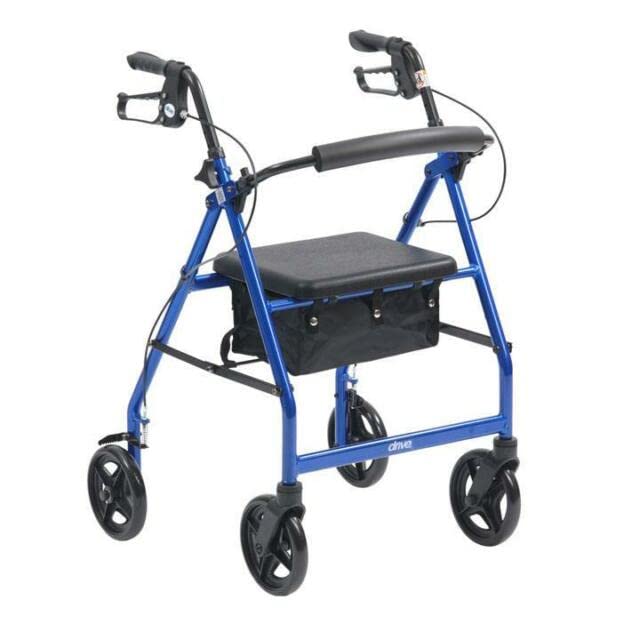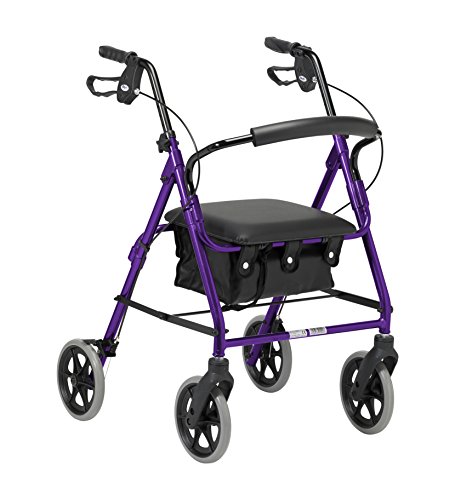10 Tips For Rollator Folding That Are Unexpected
페이지 정보

본문
 Locking Mechanism For Use With a Foldable Rollator
Locking Mechanism For Use With a Foldable RollatorNearly all rollators come with some kind of locking mechanism or latch to stop the rollators from being rolled out during storage. This is essential to safety and avoids a dangerous situation in transportation.
The lock is usually located near the center of the frame and may be a lever or a button. It's important to know how to make use of this feature.
How to fold a rollerator
Rollators are extremely effective mobility aids for those who require support and stability when walking. They are convenient, portable and come in a variety of models to suit different budgets and needs. 1. However, some users might be worried about how to fold and unfold a rollator to make it safe to use.
Luckily, many modern rollators are designed with easy-to-use folding mechanisms. They permit users to swiftly fold their walkers without any tools, making them perfect for storage and transportation. Furthermore the locking mechanism guarantees that the walker folded will not be able to open during storage or transport thus ensuring security and security to users.
Modern rollator walkers are not only easy to fold, but come with ergonomic designs that guarantee the user's comfort and safety. They come with a large basket, comfortable handles and an integrated brake lever that prevents accidental activation. In addition, they are made of lightweight folding rollator materials that ensure portability and ease of handling.
Traditional rollators however, are heavier and don't fold themselves, which makes them difficult to transport or store. Their seats are also connected to the frame which means they cannot be stored against objects or in narrow spaces. Therefore, it's essential for people who have the rollator to understand how to fold their walkers for more convenient storage and transport.
The first step to fold the rollator is to locate the locking mechanism, which is typically located in the middle of the device's frame. You can either gently lift it or release it by following the instructions of the manufacturer. After the locking mechanism has been removed then you can fold the walker by pressing the sides in tandem while holding the releases. Continue to do this until the walker is completely folded and securely locked.
In addition to checking that the lock is in place, you should also inspect your walker for loose parts and signs of damage or wear. If you find any problems you need to fix them promptly to avoid further injury and damage. It is also recommended that you regularly lubricate the moving parts of your walker to ensure smooth operation and reduce friction.
The Crossbar
The crossbar is the central bar that supports a best rollator wheelchair combo scooter (go directly to Cheaperseeker)'s frame and wheels. The crossbar is usually made of metal and connects the handlebars with the frame's bottom. The crossbar offers additional strength and stability and holds the walker's basket as well as other attachments. Many manufacturers offer accessories, such as baskets for storage and totes for their walker models. These can be attached to the front or back of the walker, or placed underneath the seat.
Many models of walker have a crossbar that folds in two directions, making them easier to carry and store. This is a significant feature, particularly in the event that the walker will be often used for travel, or long trips to the supermarket or other locations. In addition, some models of walkers include a carry bag to provide additional storage space.
The brakes are an additional important aspect of a walker that is rolling. They are typically located on the handles and crossbar. There are several different types of brake systems available, including push-down and cable loop. The brakes that are push-down require the user to apply downward pressure on the spring-loaded frame in order to stop the walker from sliding. This type of system may not be well-suited for petite users who struggle to engage the brakes or heavier users who might unintentionally activate them accidentally.
The cable loop brake is similar to the brakes on a bicycle. It is activated by squeezing the handlebars or levers simultaneously using both hands. This type of brake system offers greater control and is suited for individuals with limited hand function.
The term "crossbar" is used to refer to a single vertical stroke that crosses between two other strokes in the form of a letter. The length, thickness, and location of a crossbar may affect the readability of a letterform and is a significant distinction between serif and non-serif fonts. The crossbar of the small e, for instance, is often described as an arm.
The Release Mechanisms
Rollators are an excellent way to improve mobility and independence for those who have physical limitations. This unique stability device helps distribute the weight evenly across the user's lower body, reducing stress on muscles and joints that allow for easy and comfortable movement. With features that can be customized, such as handbrakes and handlebars that can be adjusted with built-in seating, as well as storage compartments they make it easier for users to move around their surroundings with ease and confidence. Additionally, these light and mobile mobility aids are typically covered by Medicare or Medicaid to aid in obtaining affordable.
Carbon rollators are much easier to transport and store than traditional walkers. They fold in half and can be put 5 in 1 rollator walker/electric wheelchair uk the trunk. To do this, you need to remove the basket from the frame and then pull up the crossbar. This will reveal pair of release mechanisms on either side. Press these release mechanisms while pushing the frame's sides together until the walking aid expands to its smaller size.
The locking assembly affixes to a top substantially horizontal support arm 218 that joins two vertically oriented tubular legs in the rear and front 220 and 228, respectively. Connected to the ends of the rear and front tubular legs are tubular leg extensions that telescoping 226 and 228, respectively. These telescoping extension can be rotated from an unlocked to a locked position in order to alter the height.
After the extension leg segments are in the proper position the non-sliding handgrip is attached to the end of the actuating lever. The housing is connected to the actuating lever via an extension piece that extends away and a recess designed to accommodate the extension piece. The extension piece and recessive portion form an axis around which the actuating lever can be rotated.
When the telescoping leg segments are in the appropriate position the locking mechanism is activated a snap button and biasing spring (not shown). This arrangement allows the user to engage and disengage the mechanism to fold to make it easy to store and transport of the walking aid.
The Locking Mechanism
The present invention is a locking mechanism to be used with the foldable rollator or walker. The invention addresses a requirement for a lock assembly suitable for use with such walkers and rollators that are easy to adjust between folded and unfolded positions by persons who may have limited mobility.
In general, the device consists of a pair spaced side frames, with the cross brace that connects them. It also includes two handle bars. Two hand brakes are mounted onto the handles and each includes a plunger that is pin-actuated that engages with the plunger on a respective cross bar. As the user pushes the hand brakes, the pin actuating plunger is depressed, creating a side frame that can fold into a position.
This type of device has an issue in that the actuating handle must be held with one hand while trying to push the pin-actuating plunger. This is a problem for people with weak hand strength and/or dexterity. The present invention addresses this issue by incorporating an assembly for locking that is functionally connected to the actuating lever.
As shown in FIG. As shown in FIG. A lock plate is set within the bore and features an aperture that is adapted to accommodate a locking end of the pin that locks. The part of the actuating hand between the handle that applies force and the attachment end the body is configured to pivot in relation to both body parts, such that the locking plate is moved from a first position in which it prevents rotation of the tubular leg to a position in which the telescoping leg can be extended.
 When the actuating lever is operated by the hands of the user, the locking pin is moved from its initial position to the second position. This causes the leg extension telescoping can be retracted from the side frame, which rotates it into a folded position. This can be done while the user's hand is still firmly gripping the handgrip 24 of the side frame. This feature can significantly reduce the amount of effort needed to fold up rollator a rollator in and out of its folded position.
When the actuating lever is operated by the hands of the user, the locking pin is moved from its initial position to the second position. This causes the leg extension telescoping can be retracted from the side frame, which rotates it into a folded position. This can be done while the user's hand is still firmly gripping the handgrip 24 of the side frame. This feature can significantly reduce the amount of effort needed to fold up rollator a rollator in and out of its folded position.- 이전글지구를 지키는 자: 환경 운동가의 이야기 24.12.29
- 다음글How to Decode Winning Powerball Numbers: Strategies, Stats, and Insights 24.12.29
댓글목록
등록된 댓글이 없습니다.

